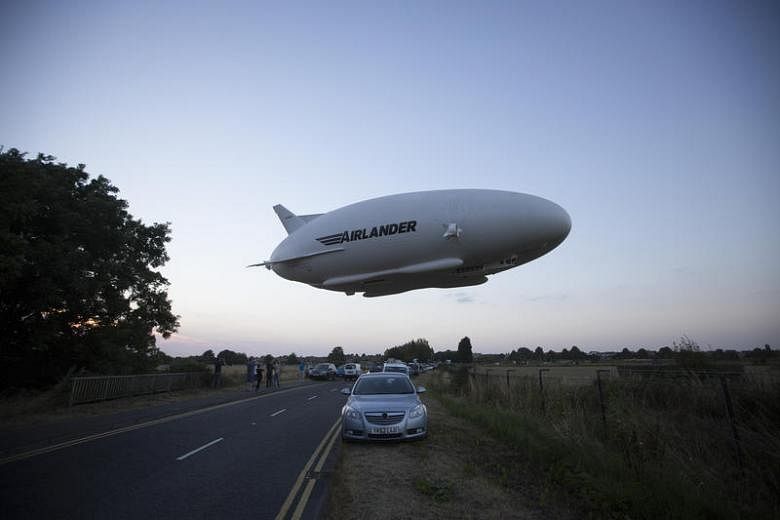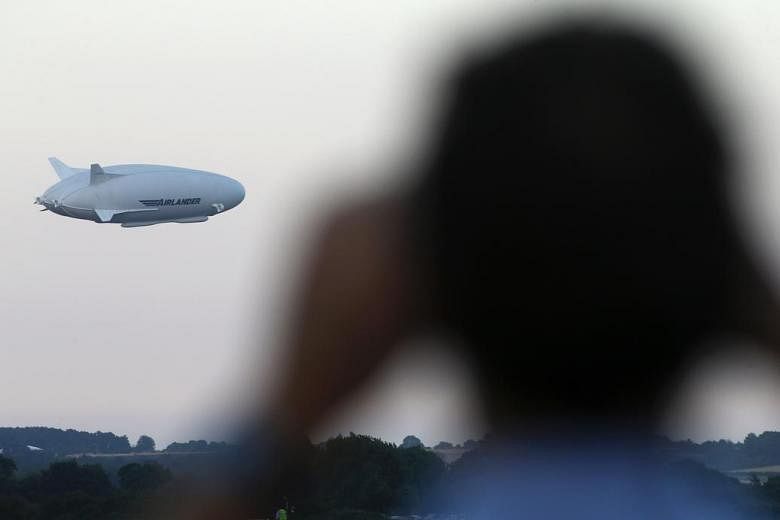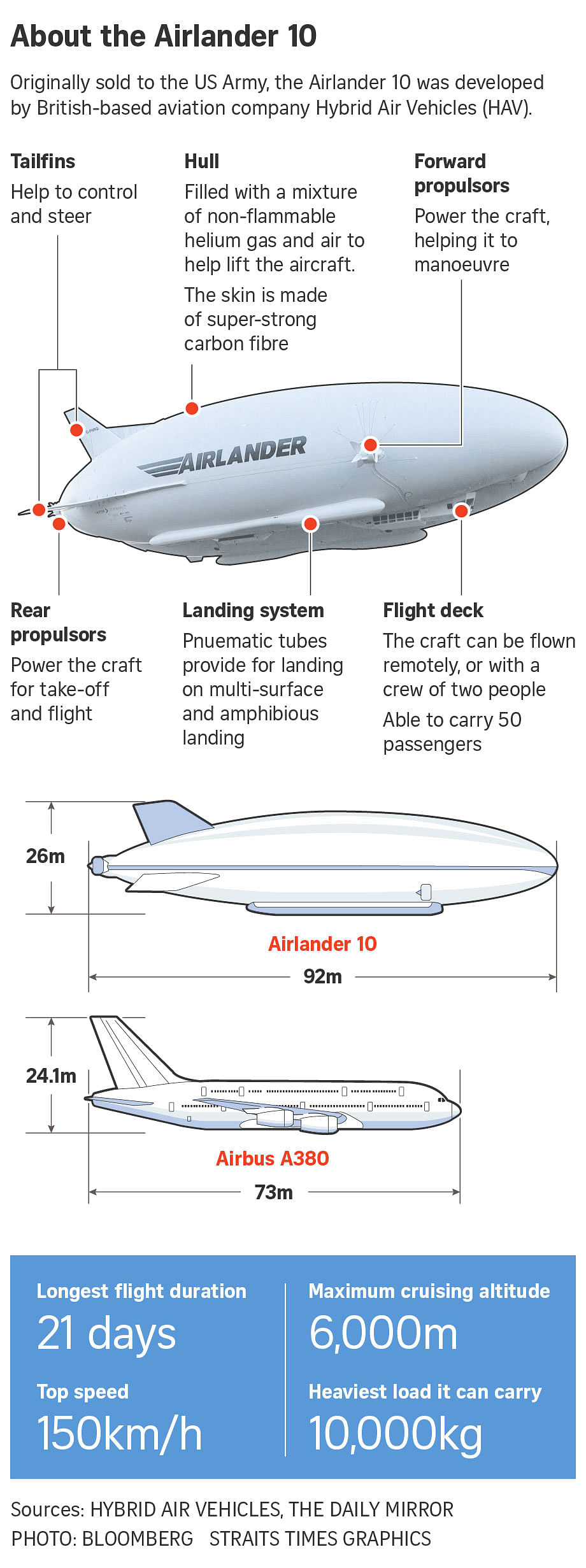The Airlander 10 made history with its maiden flight on Wednesday (Aug 17) in Bedfordshire in Central England.
The jumbo aircraft, measuring 92m long and 43.5m wide, is said to be the largest aircraft in the world.
Spectators gawked in awe as the bean-shaped aircraft, nicknamed "the flying bum" due to its bulbous exterior, soared through the sky.
The success of its first flight could be the hallmark of a new era for air travel.
Not only is the Airlander 10 larger than the Airbus A380, which currently stands as the world's largest civilian aircraft, it is also cheaper.
The catalogue price of the Airlander 10 is £25 million (S$44.1 million), which is approximately £262 million cheaper than the A380, which is priced at £287 million.
Here is a quick run-down on the blimp cum airplane hybrid aircraft.
1. It was originally envisioned to be a military airship

The United States airforce had first conceived the Airlander 10 to be a battlefield surveillance mothership that had the capability to float above military conflict zones for 21 days when unmanned.
The project was heavily funded, with the US airforce pouring US$300 million (S$403 million) into it.
However, when the US government slashed its military budget in 2013, the Airlander project was one of the projects that had to be abandoned.
2. Airlander 10 saw a change of hands
After the US military had abandoned the project in 2013, British-based aviation company Hybrid Air Vehicles (HAV) recognised the potential of the aircraft and purchased it from them.
In order to continue funding the ambitious project, HAV sought out private investors as well as ran several rounds of crowdfunding campaigns.
It managed to raise a total of £17.5 million from 1,000 shareholders.
The project also benefited from US investments as well as British and European grants.
3. Airlander 10 impresses with its performance
Size is not the only thing that the Airlander boasts. The aircraft can stay airborne for weeks at the time, making it the ideal vessel for monitoring activity such as insurgents planting explosives.
Do not be fooled by its large exterior, for the airship can also fly out of reach of all but specialised ground-to-air weaponry, allaying the fears that the aircraft can be brought down by a pop in its shell.
Furthermore, its hull is made from three layers of fabric, including Vectran, a material that is five times stronger than steel.
Flight is made possible for the aircraft by helium, which is an inert gas. This makes the Airlander 10 a lot safer than its hydrogen-fuelled predecessors, such as the Hindenburg and the R101.
HAV has also said the aircraft can fly in high winds of up to 80 knots, which is the highest level on the Beaufort wind scale.
It also has the ability to carry up to 80 tonnes of cargo, and cruises at a top speed of approximately 160kmh.
The Airlander 10 is also able to operate where most conventional places cannot: It is able to operate from open fields, deserts, ice or even water.
4. Developer's hopes for the aircraft are ambitious
HAV's chief executive Stephen McGlennan believes that there could be 100 of the Airlander 10 in the skies in five years.
He also believes that the latent demand for the aircraft is around 1,000.
Mr McGlennan cites tourist pleasure cruises, cargo transports and disaster relief as some of the potential uses of the airship.
He also believes that though the US airforce had a weak interest in realising the project, there are already other military powers that have shown keen interest for the aircraft.
In fact, he predicts that in the beginning of the Airlander 10's launch, 40 to 50 per cent of its use will be military.
At the moment, however, HAV's concrete plans are modest, with a target to build 12 more airships by 2018.
Sources: The Guardian, Reuters



